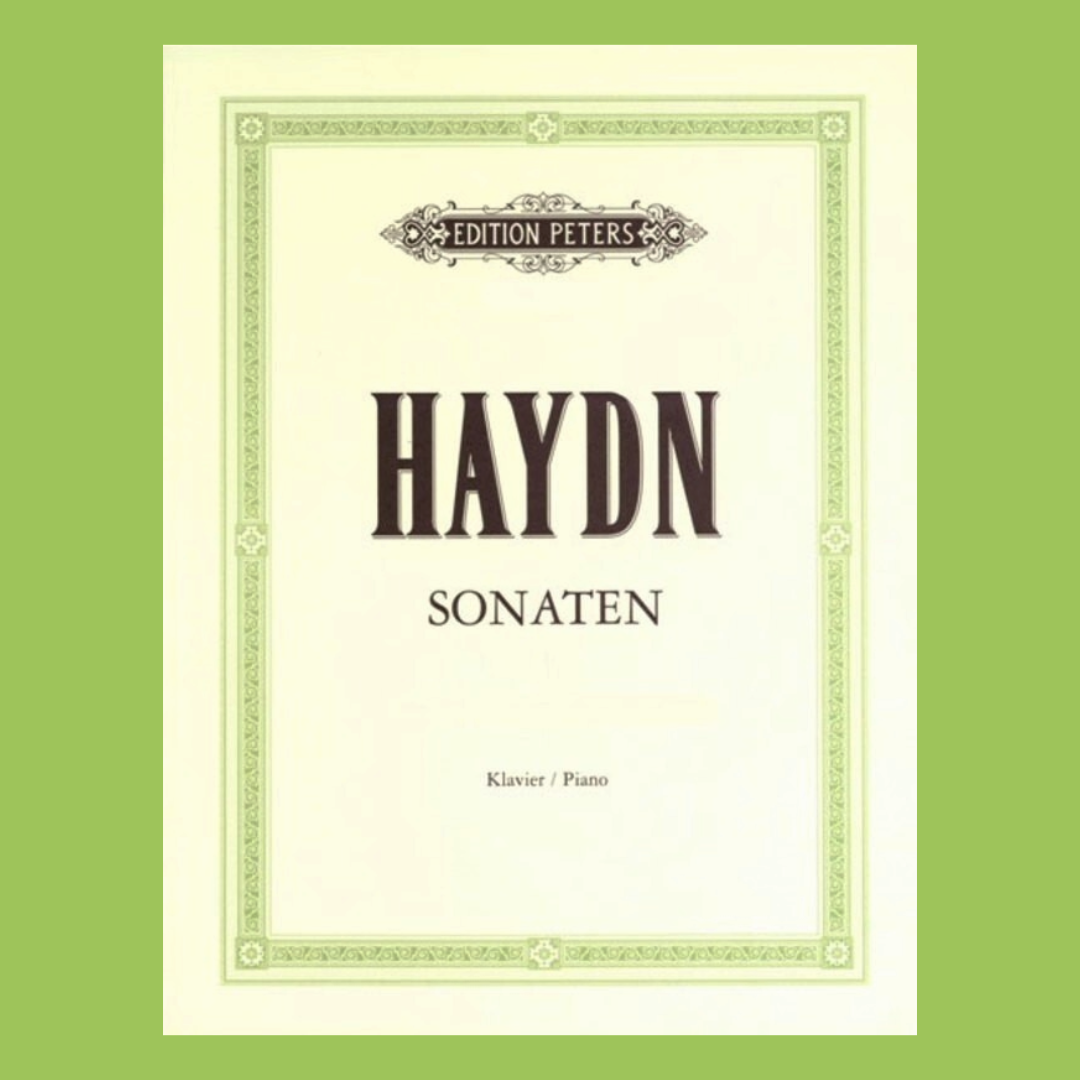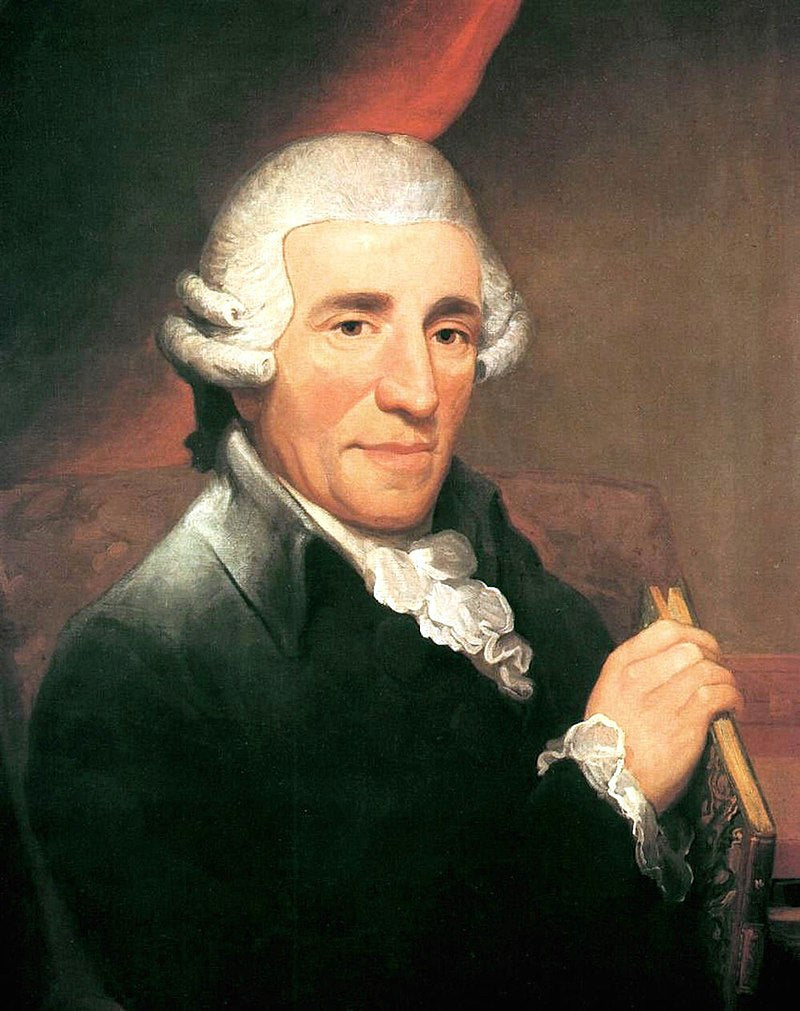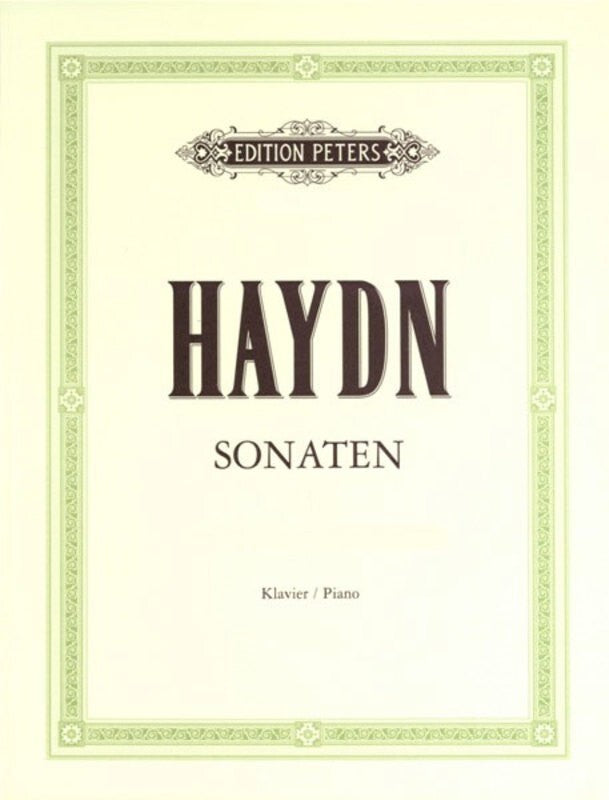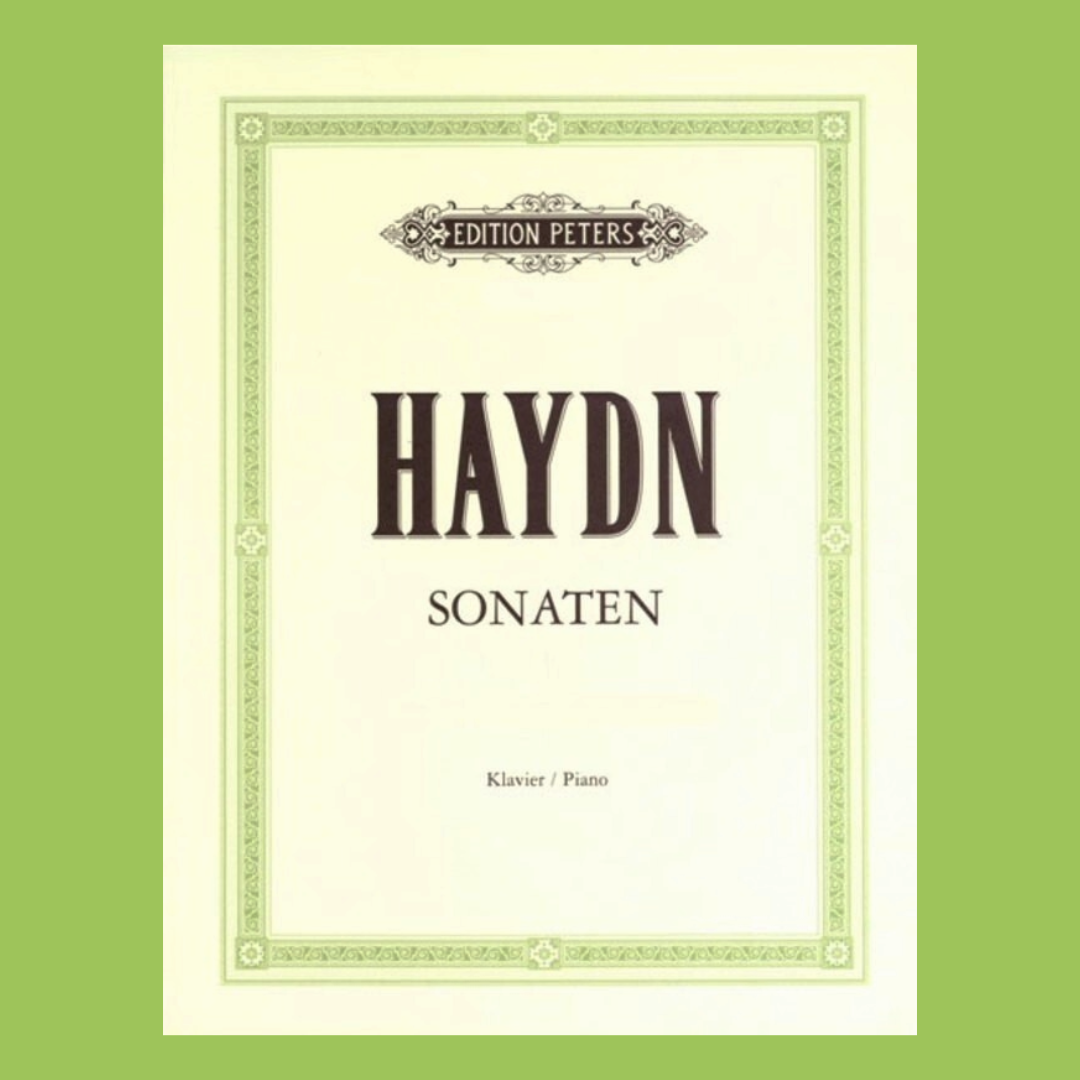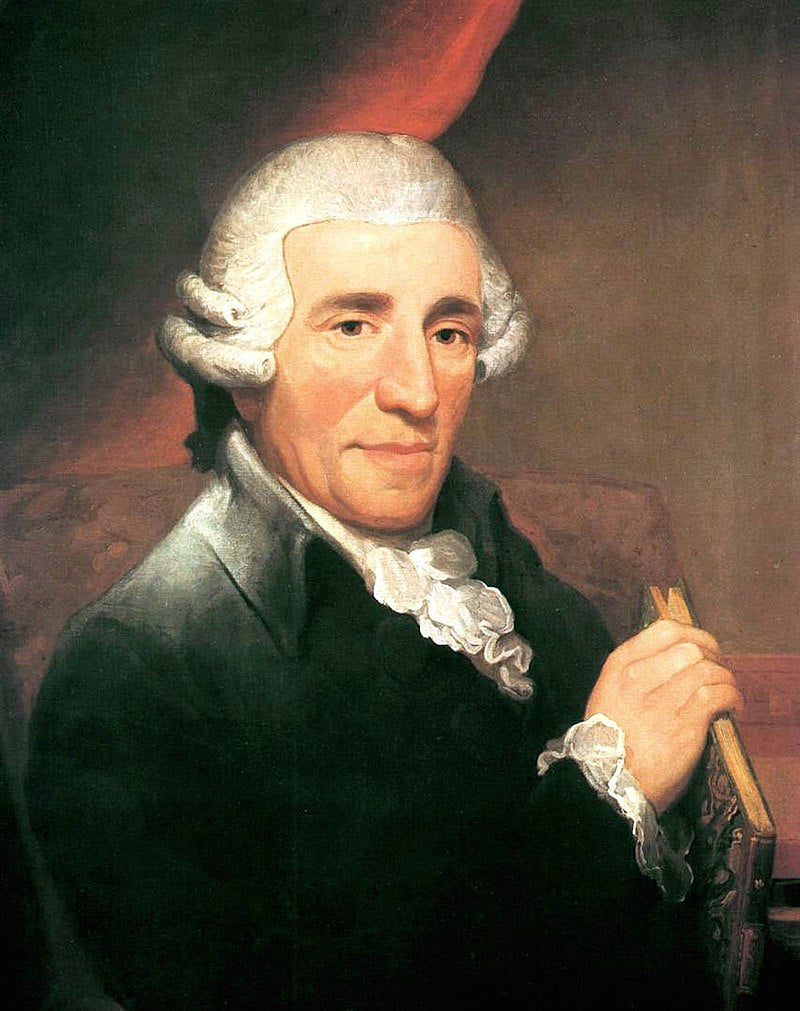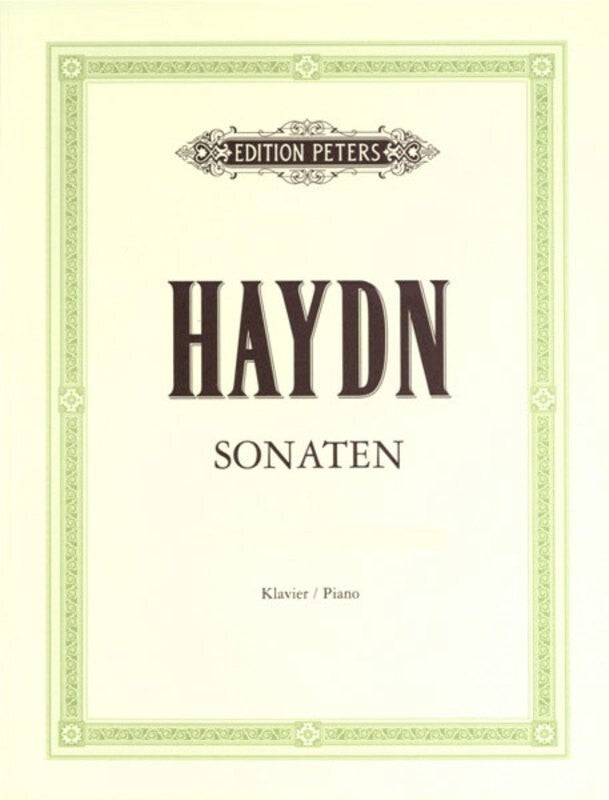Haydn - Piano Sonatas Volume 2 Book
Haydn - Piano Sonatas Volume 2 Book
🇦🇺 Free Australia-Wide Shipping Over $129*
📦 Economy Un-tracked Shipping $5.99* (No Tracking Number)
🚚 Standard Tracked Shipping Under $64.99 - $13.99*
🚚 Standard Tracked Shipping Over $64.99 - $9.99*
✈️ Express Tracked Shipping $18.99*
Couldn't load pickup availability
Type:
Brand:
Category:
Genre:
Edition Peters
Franz Joseph Haydn - Piano Sonatas Volume 2 Book 📚
Genre: Classical
Level: Intermediate - Advanced
In this second volume of Piano Sonatas by Franz Joseph Haydn, Edition Peters offers a meticulously edited collection aimed at intermediate to advanced pianists. The book spans a total of 116 pages and is edited by Adolf Martienssen, an expert in classical piano literature. This particular edition is a fantastic resource for students, educators, and performers who are keen on immersing themselves in Haydn's distinct classical style.
The sonatas featured in this volume are part of the Hob.XVI catalog, which is the thematic catalog of Haydn's keyboard sonatas. Specifically, the sonatas included are Nos. 2, 5, 13, 14, 18, 21, 23, 27, 28, 29, 33, 39. Each piece provides unique opportunities for the player to explore various facets of classical piano technique and interpretation, such as articulation, phrasing, and dynamics. This is especially crucial for those working on mastering the nuances of classical performance.
Adolf Martienssen's editorial contributions add an invaluable layer to the book, offering nuanced interpretive suggestions that are aimed to guide pianists in realising the stylistic and technical intricacies of Haydn's music. Whether you are looking to sharpen your technical skills, gain a deeper understanding of classical form and harmony, or simply expand your repertoire, this book serves as an all-inclusive guide.
Contents:
- 1 Sonata Hob 16 No 2
- 2 Sonata Hob 16 No 5
- 3 Sonata Hob 16 No 13
- 4 Sonata Hob 16 No 14
- 5 Sonata Hob 16 No 18
- 6 Sonata Hob 16 No 21
- 7 Sonata Hob 16 No 23 F Major
- 8 Sonata Hob 16 No 27
- 9 Sonata Hob 16 No 28 E Flat Major
- 10 Sonata Hob 16 No 29
- 11 Sonata Hob 16 No 33 D Major
- 12 Sonata Hob 16 No 39 G Major
- 13 Sonata Hob XVI/27 G Major 3rd Movement
AMEB:
Piano / Associate / List A
- Sonata in D major Hob XVI:33
- Sonata in Eb major Hob XVI:28
- Sonata in F major Hob XVI:23
- Sonata in G major Hob XVI:39
Piano / Grade 5 / List B
- Menuetto and Trio 2nd movement from Sonata (Partita) in E major Hob. XVI:13
Piano / Grade 6 / List B
- Finale - Allegro 3rd movement from Sonata in D Hob XVI:14
- Finale - Presto 3rd movement from Sonata in G major Hob XVI:27
- Moderato 1st movement from Sonata in Bb Hob XVI:2
- Moderato 1st movement from Sonata in E major Hob XVI:13
Piano / Grade 8 / List B
- Moderato 1st movement from Sonata in F major Hob XVI:29
Piano for Leisure / Grade 8 / Open Manual list
- Presto 3rd movement from Parthia in E major Hob XVI:13
Who Was Franz Joseph Haydn?
Franz Joseph Haydn (1732–1809) was an Austrian composer of the Classical period, often referred to as the "Father of the Symphony" and the "Father of the String Quartet" due to his pivotal role in the development of these forms. Haydn's contributions to musical composition have earned him a place as one of the most celebrated and influential composers in Western history.
Haydn was born in Rohrau, Austria, and showed an early talent for music. As a young boy, he joined the choir of St. Stephen's Cathedral in Vienna, where he received his initial musical training. He spent much of his career as the court musician for the wealthy Esterházy family, which provided him with financial security and the freedom to compose prolifically.
Haydn's music was instrumental in the development of the Classical style, characterised by structural clarity, balanced proportions, and a focus on melody and harmonic development. His works served as a model for later composers, including Mozart and Beethoven.
Among his most famous works are 104 symphonies, string quartets, piano sonatas, and the oratorios "The Creation" and "The Seasons." His compositions are often marked by a sense of humour and wit, as well as a mastery of form and orchestration. Haydn was an innovative composer who expanded the symphonic form and the string quartet, enriching them with his broad emotional range, from the playful to the profound.
While Haydn was esteemed during his lifetime and remains highly regarded today, his influence extends far beyond his compositions. He is credited with establishing the format and structure of the four-movement classical symphony and string quartet, setting the stage for the further evolution of these genres in the hands of later composers.
Shipping Information
Shipping Information
Shipping Policy
- Untracked Shipping is an untracked shipping option offered through Australia post. No tracking number is provided with this service. Please allow 4-9 business delays for delivery of your order.
-
Standard Shipping is a fully tracked service offered through Australia Post/Toll. A tracking number will is provided once your order is shipped. Please allow 2-6 business days for delivery of your order.
- Express Shipping is a fully tracked Express Service offered through Australia Post/Toll Priority. A tracking number will is provided once your order is shipped. Please allow 1-3 business days for delivery of your order.
Tracking Your Order
Pre Orders
Share
